Table of Contents
Light Art in Painting and Photography
Painters throughout the Renaissance era are studying the light and shade changes and expressive power. For example, Da Vinci, although he uses a lot of light and shade, the edges are still sharp, but the light and shade have never been separated.
Caravaggio took to the extreme the Titian tradition of expressing volume and space with light and shade and creating a mysterious atmosphere. In order to highlight the expressive and dramatic effects of light and shade, the color was boldly simplified, and the era of “soy sauce tone” that has been brown since he started has arrived.
Rembrandt also likes to create wonderful light effects in front of dark backgrounds. The bright part has a thick color, and the dark part is thin and transparent. The different methods of the two areas of light and darkness cooperate with each other to obtain a full sense of shaping and dramatic charm.
The painters’ achievements in using light were easily grasped by the photographers. In fact, the same problem faced by photography and painting is to transform the three-dimensional world into a two-dimensional world, that is, how to present a three-dimensional visual experience on a plane. The light and shade can suggest volume and space, and become an effective means of expression.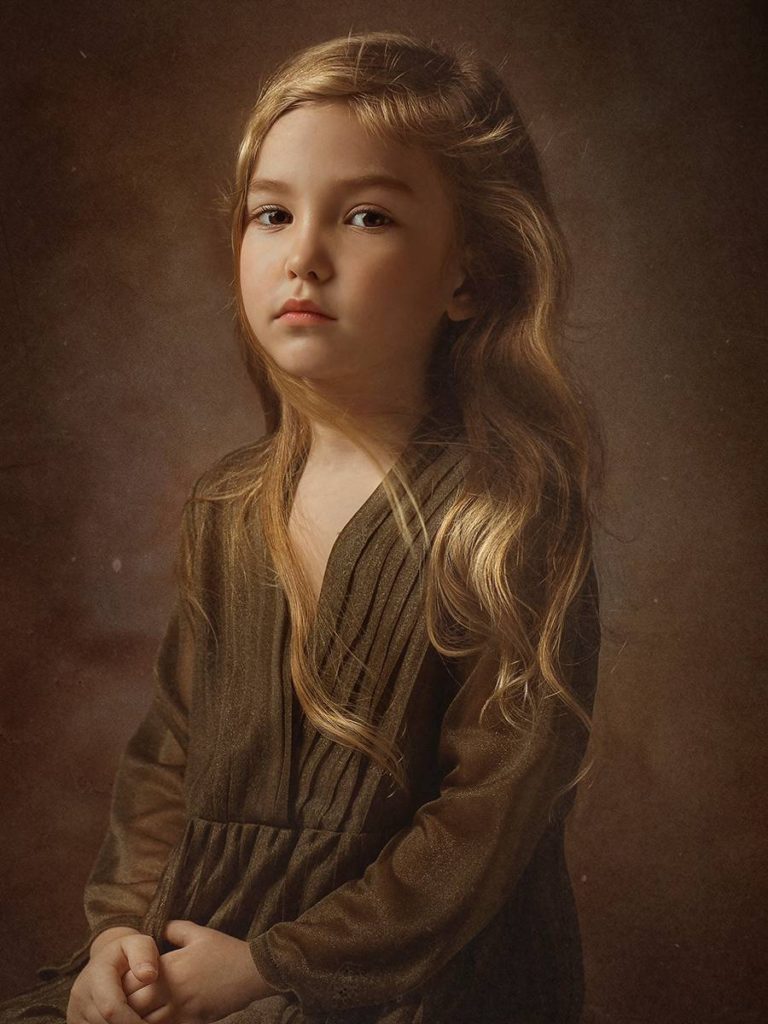
Aperture: F/4.0 Shutter speed: 1/125s Focal length: 85mm ISO: 50
Darkness is the Premise of Lightness
Darkness and lightness are relative. They are mutually cause and effect and complement each other. In photography, if the expression of “bright” is the only one-it comes from light, then the expression of “darkness” is diverse. For example, the color of the background and the subject, such as the shadow formed due to the inaccessibility of light.
In this group of works, the dark background and dark clothing become the premise of lighting. This “soy sauce tone” that has been popular since the 17th century is very popular among photographers. The real reason is that this contrast between light and dark makes people feel comfortable and pleasant visually.
Three Elements of Lighting Layout
The wonderful thing about light is that it can divide a chaotic darkness into bright parts, dark parts, and transitional areas in the middle. The photographer guides the viewer’s line of sight and the sequence of visual attention through the brightness and darkness of the light, so as to realize the expression of his shooting intention.
In this process, three factors need to be considered:
- 1. The direction of light projection. This is the most important link in lighting, because light in different directions has different modeling meanings. It also determines the size of the subject’s light-receiving surface and the area of the shadow, and the resulting contrast of light and dark will directly determine the tone and atmosphere of the picture.
- 2. The orientation of the character’s face. The orientation of the character’s face will ultimately determine how much light the face receives. Generally speaking, the face of a person faces the direction of the light source, that is, the light illuminates the face, and the key lies in the proportion of light and shade of the face. This is more flexible. When the character’s face needs more light, you can make the character turn to the light slightly. It needs to be emphasized that it will cause a series of changes in contours, eyes, limbs, etc., so you need to pay attention to the overall adjustments.
- 3. The direction of the character’s gaze. The eyes are the most important organ for expressing feelings, and the expression in the eyes can convey the mood and atmosphere of a work. Whether a character’s eyes are looking at the camera or looking elsewhere has different meanings. Whether the characters open or close their eyes also describe different emotions.
Top Light Source 1
Main Light Source
The main light source is a soft box located about 1 meter above the subject. Adjust the position of the soft box so that it is 45° to the right of the subject. Keep the subject at the edge of the soft box so that only the subject’s face is exposed to light. The details of the hair are also limited to the front side. Arrange a reflector at 45° on the left side of the subject, with a distance of about 1 meter between the two to reduce the contrast between light and dark and ensure that the details of the dark parts are reflected.
The role of top light
Under the condition of the top light source, the protruding parts of the character’s forehead, cheekbones, and bridge of the nose are very bright, while the backlight under the brow bones, eye sockets, under the nose, and chin will form heavy shadows. The subject’s face has distinct levels and a strong sense of three-dimensional outline. The height of the top light and the distance to the subject will affect the character’s shape. The relative distance between the light source and the person should be adjusted according to the shooting intention. What needs to be emphasized is that the closer the light source is to the subject, the softer the light, and vice versa, the harder the light.
Top light is a kind of special modeling light effect. In addition to providing main light illumination, it can also take into account contour light (such as luminescence) and modification light (such as catch light). Of course, these effects require the photographer to properly adjust the relative position of the light source and the subject to be achieved. The concept of portraits shot with top light is relatively strong, and it can highlight the character characteristics of the characters.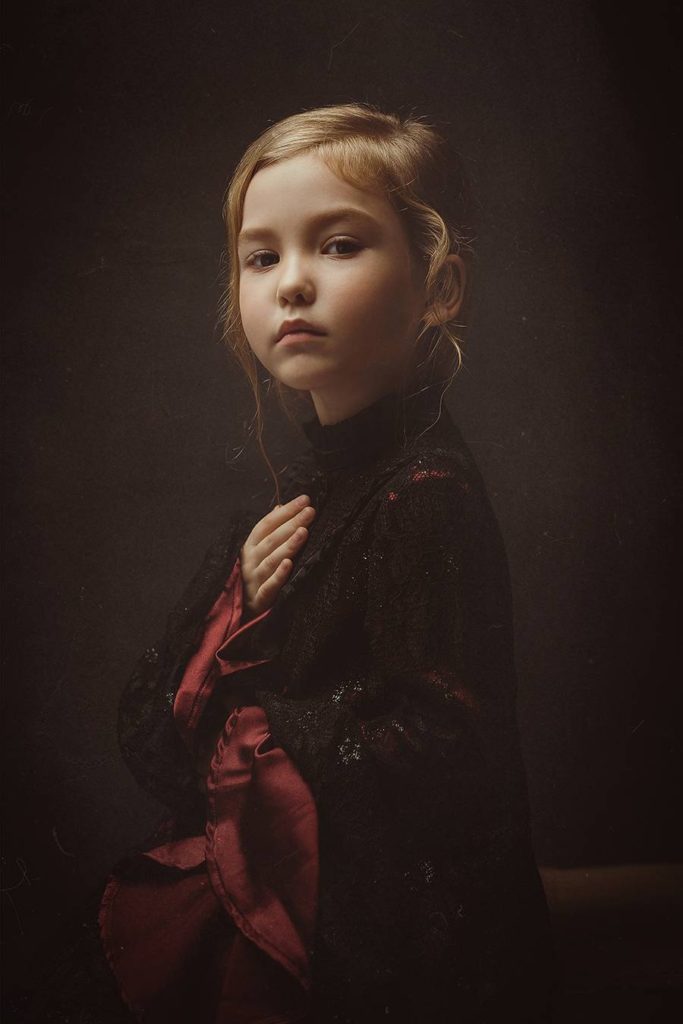
Aperture: F/3.2, shutter speed: 1/125s, focal length: 85mm, ISO: 50
Top Light 2
The main light source is a soft box located about 1 meter above the subject. The subject is at the back edge of the softbox. The light is soft and uniform, which dilutes the shadows on the faces of the characters.
The background light is a flash with a standard cover, which hits the background directly at the height of the person’s shoulders. This creates a transition from light to dark from the center to the surroundings on the background, which enriches the tonal levels of the picture. It also opens up the distance between the characters and the background, increasing the sense of space in the picture.
Another auxiliary lamp is behind the photographer, with the lamp head facing the ceiling, creating a diffuse reflection effect. Because the shooting environment is dark, the light provided by this auxiliary lamp can reduce the contrast between light and dark, so that the transition between light and dark is natural.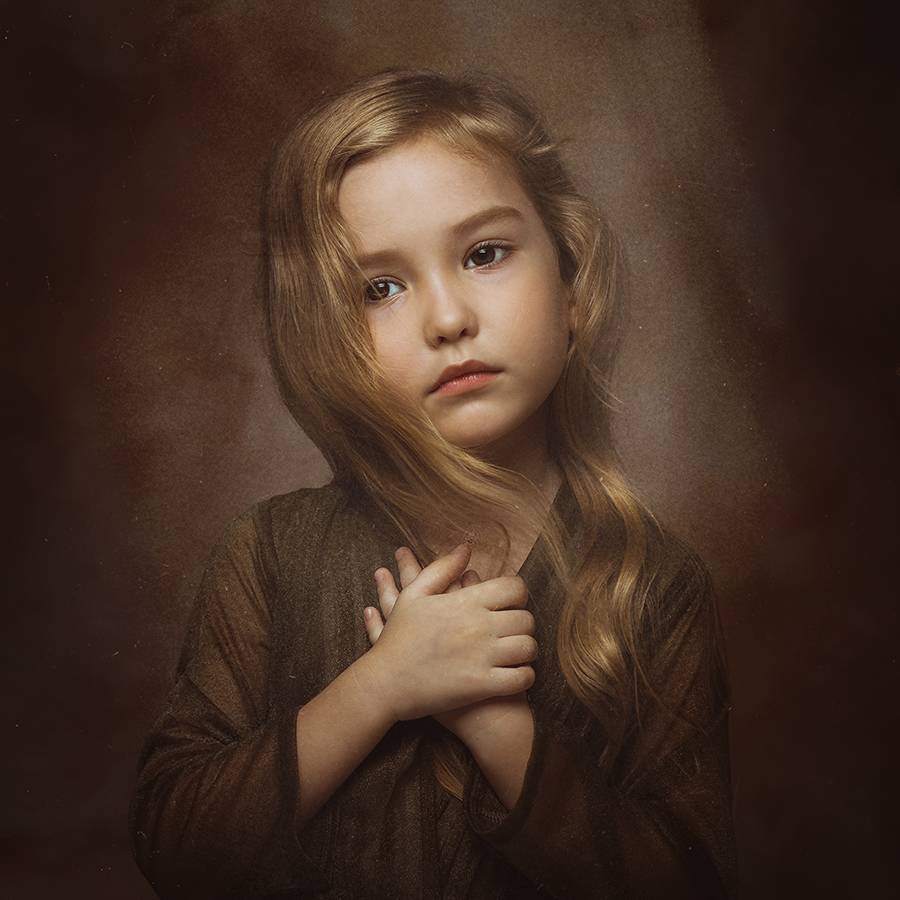
Aperture: F/4.0, shutter speed: 1/125s, focal length: 85mm, ISO: 50
Front Side Light 1
The main light is a flash with a soft box, arranged at 45° to the right of the character. A reflector is arranged at 45° to the left of the character, and the distance between both and the character is 1 meter. This can ensure the softness of the light.
The front side light can form a larger area of light-receiving surface on the character, which is not only conducive to the detailed description of the five senses, but also easy to emphasize the texture of the character’s skin and clothing.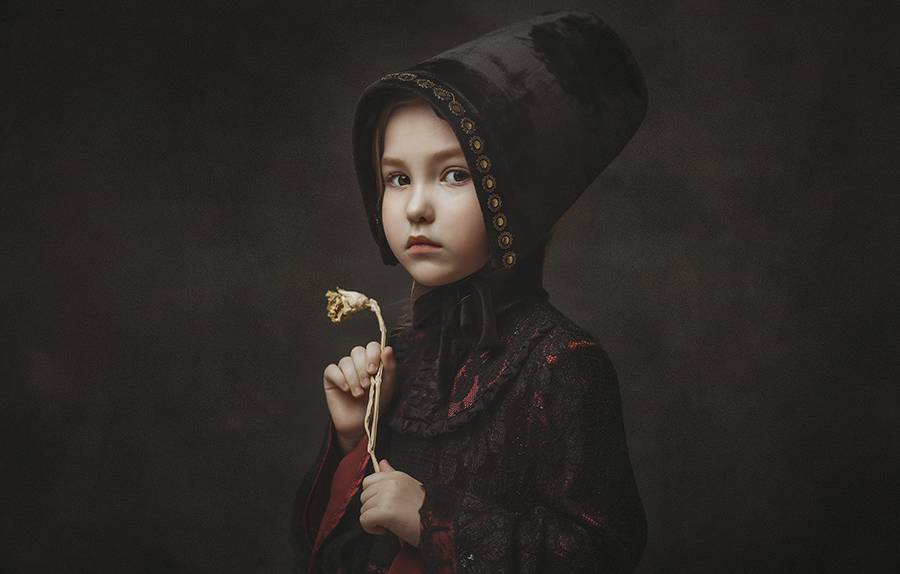
Front Side Light 2
Combination lighting method of single-lamp softbox and reflector. The distance between the lamp and the character is about three meters, so that the entire scene can be illuminated. The character image is more three-dimensional, and the texture of the background cloth has a larger contrast between light and dark. The distance between the lamp and the character determines the contrast between light and dark in the picture. The closer the distance, the smaller the contrast. The greater the distance, the greater the contrast.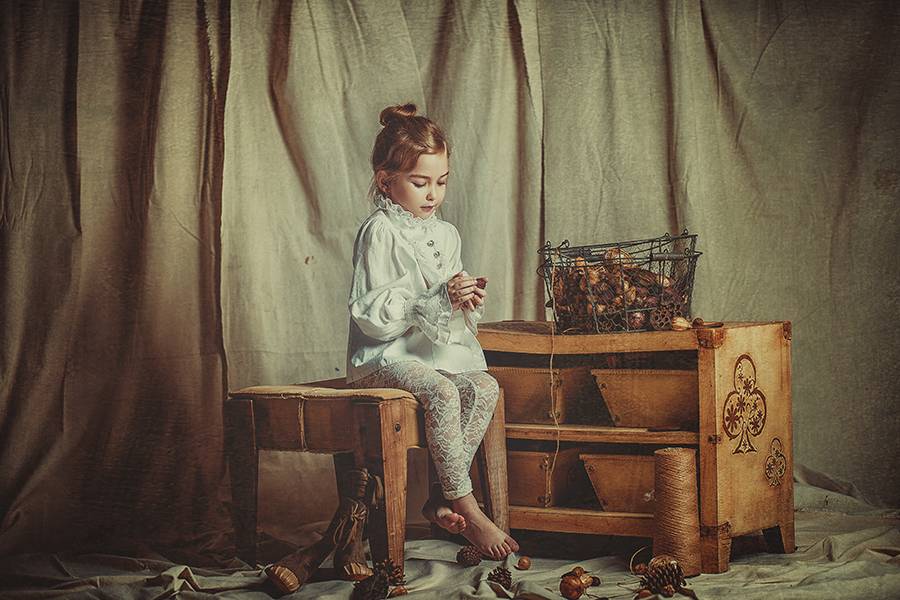
Aperture: F/2.2, shutter speed: 1/125s, focal length: 85mm, ISO: 50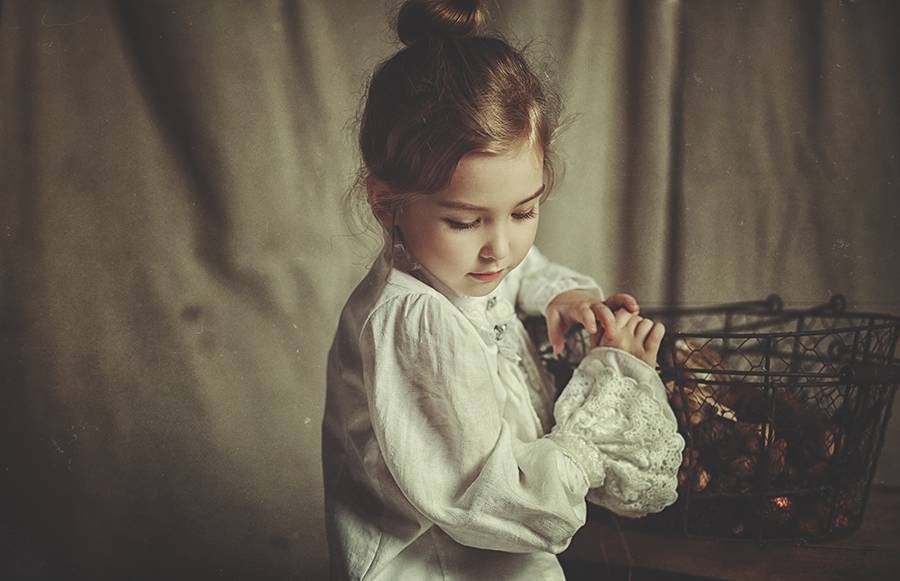
Aperture: F/2.2, shutter speed: 1/125s, focal length: 85mm, ISO: 50
Side Backlight 1
The main light is a flash with a soft box. It is located 45° behind the right side of the character, about two meters away from the character. The reflector is 45° to the left of the character, about two meters away from the character. Such lighting can emphasize the three-dimensional and spatial sense of the screen.
The background light is a flash with a standard cover, and the height is level with the shoulders of the person. The light hits the background directly, allowing the background to form a light-dark transition from the center to the surroundings, presenting a deep sense of space.
Another auxiliary lamp is arranged behind the photographer, with the lamp head facing the ceiling. The diffusely reflected light illuminates the entire space to adjust the contrast of existing light.
The light source of the side backlight is located behind the person’s side and will form a bright spot on the edge of the person’s light. Because the shadow surface occupies a larger area, the tones of the character’s face appear deeper. Side backlighting can separate the characters from the background, creating a greater sense of space. The best light ratio of the color portrait is 2:1 or 3:1.
Aperture: F/4.0, shutter speed: 1/125s, focal length: 85mm, ISO: 50
Side Backlight 2
The main light is a flash with a soft box. It is located 45° behind the right side of the character, about two meters away from the character. The reflector is 45° to the left of the character, about two meters away from the character. Since the face of the person faces the main light side, the light-receiving surface of the face is larger, so the photographer has added no auxiliary light.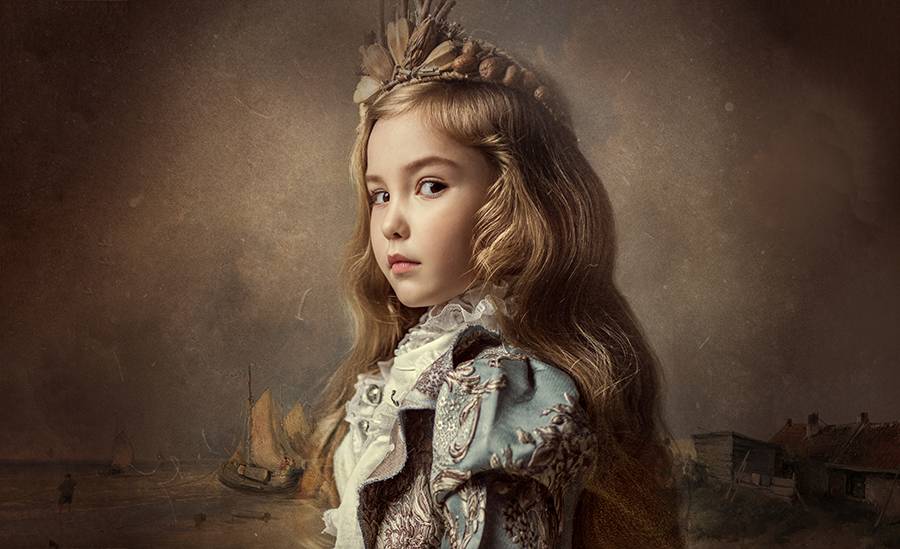
Aperture: F/2.2, shutter speed: 1/125s, focal length: 85mm, ISO: 50
Lighting for Location Shooting
Outdoor lighting needs to consider two factors: flash and ambient light (natural light). Since natural light is uncontrollable, we need to choose the appropriate weather and time period for shooting. The flash can help us achieve the shape of the light.
Photographer has taken this location photo at about 5 o’clock in the afternoon on a cloudy day. The sun hides in the thick clouds, the light is dark and soft. At this time, a flashlight to provide lighting will be perfect. I placed the flash with the soft box at 45° to the right of the character. And the distance between the light and the character was about three meters. This not only darkens the background, but also gives the characters a sense of three-dimensionality.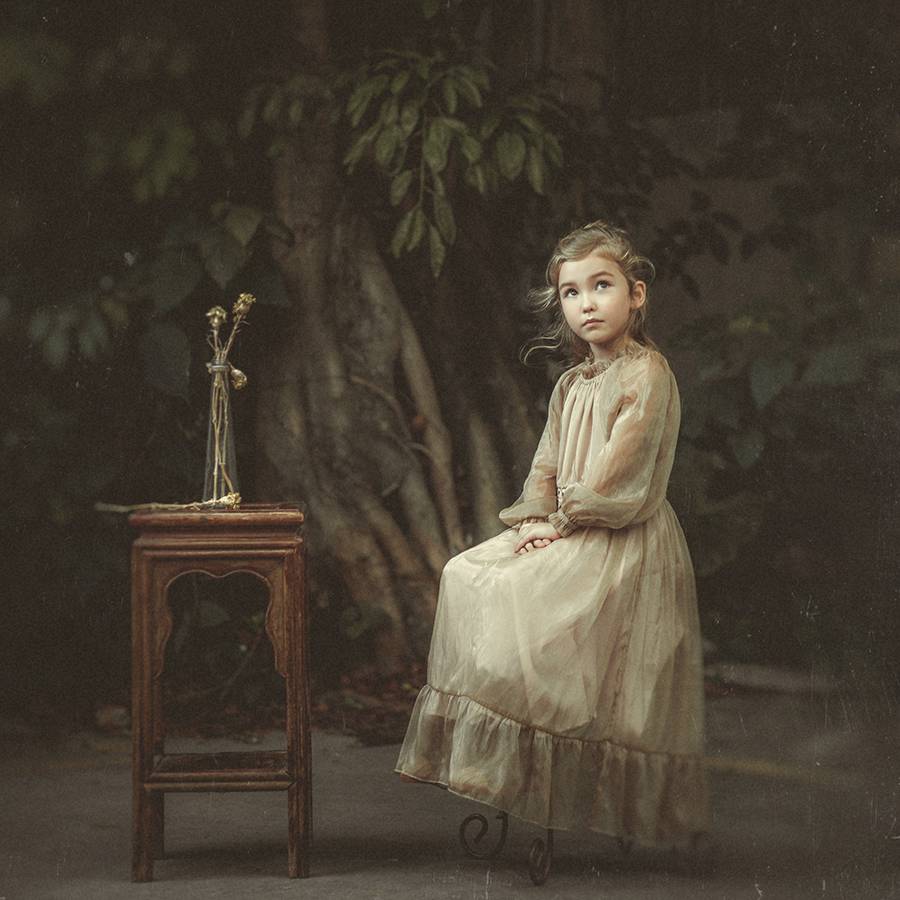
Aperture: F/2.2, shutter speed: 1/125s, focal length: 85mm, ISO: 50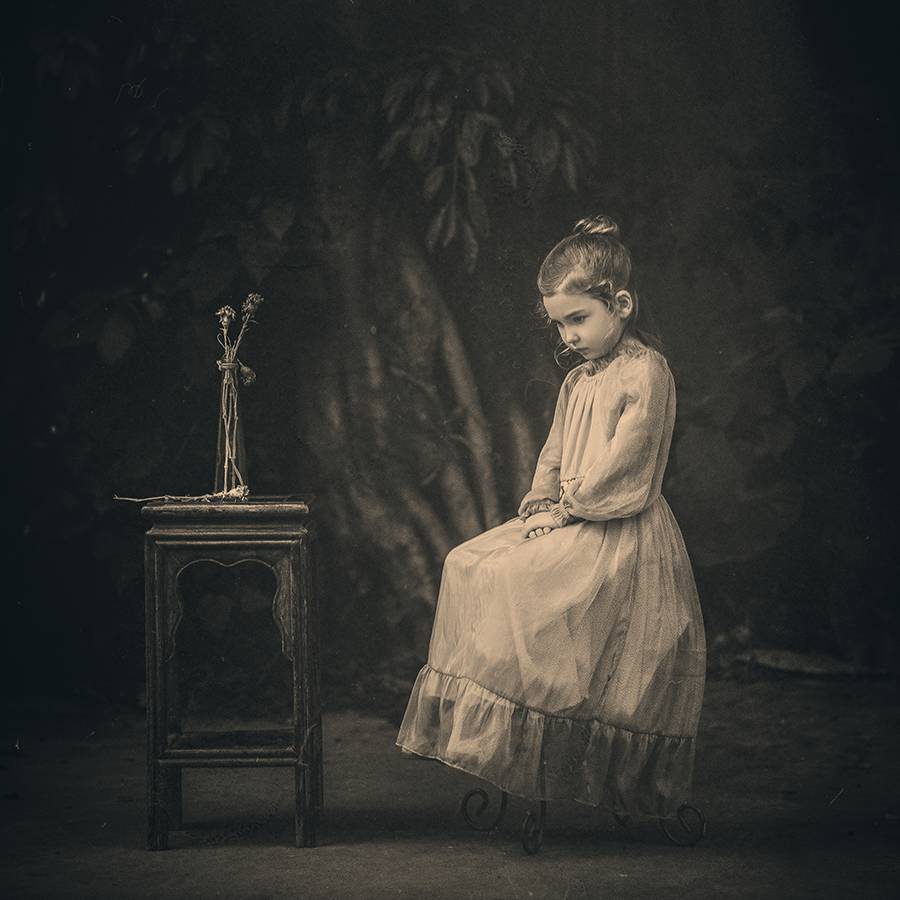
Aperture: F/2.2, shutter speed: 1/125s, focal length: 85mm, ISO: 50
